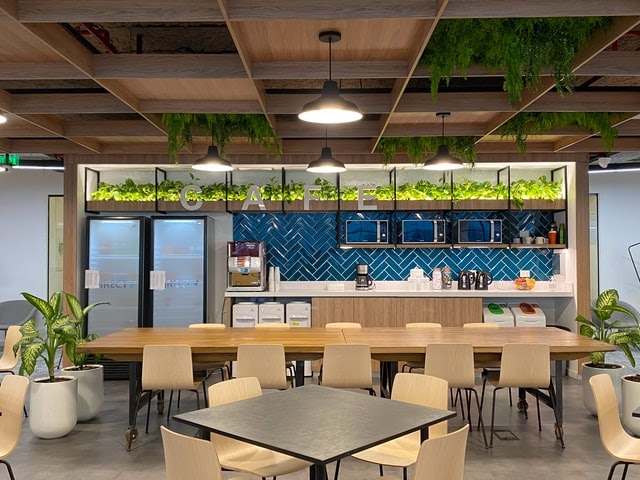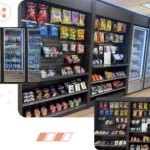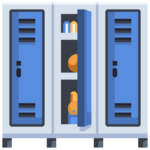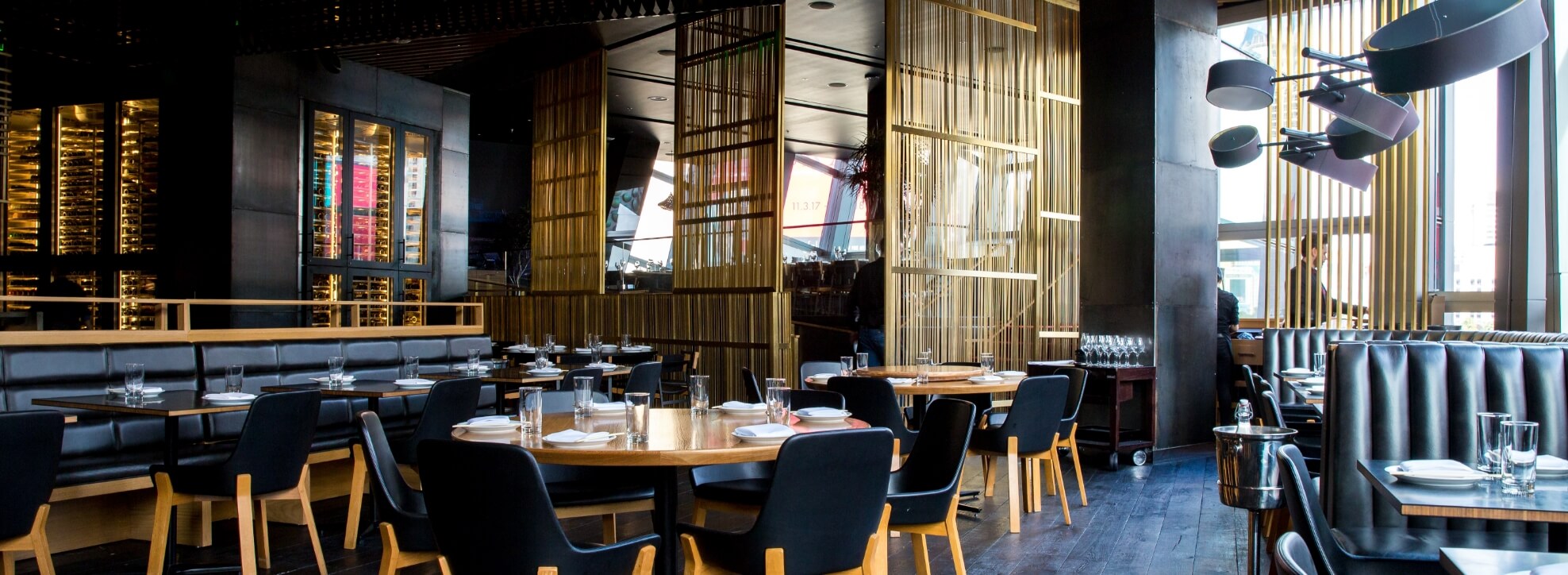
The Definitive Guide to Switching POS Systems
It’s no wonder that restaurant owners aren’t exactly excited at the prospect of changing POS systems, even when it’s clear their current solution is no longer providing a good return on investment.
Many restaurateurs assume that the process of switching POS systems will be long and complicated, and that they may even have to shut down the business while they change out equipment and get the new point of sale system set up.
Although selecting and implementing a new POS system does take some time and effort, modern, cloud-based pos software makes the process of switching much easier than it used to be.
As we’ll discuss, the hardware requirements are minimal, and the data from your current system is easy to migrate. You can phase the new system in over time with no need to shut down your restaurant.
Although you may worry about wasting time and money by investing in new software, it’s worth noting that every day you stick with an outdated POS system, you’ll be missing a lot of the valuable features, from marketing, inventory management to customer service, that your business needs to make money and stay competitive.
So whether you need a new POS system because the old one has become too expensive, is missing important features, or is simply not easy enough for your employees to use, stay tuned. In this article, we’ll go over everything you need to know to switch your POS system.
Start with Research on Point of Sale Software
The first step in your journey of choosing the best out of the modern POS systems is research. There are plenty of POS options on the market, and you’ll have to carefully assess a number of factors that help you choose the right software for your business.
Most restaurateurs at this time are switching POS systems because they have an older, “legacy” system that doesn’t have all the features of a new cloud-based system, or they want to switch from one cloud-based system to another because they found a more attractive price point or set of features.
Regardless of your reason for switching, here are all the factors that may influence your decision as you evaluate new restaurant POS systems:
Point of sale Infrastructure / Hardware Requirements
In the past, before the advances in cloud computing and digital tools, all computerized POS systems were run on local computers. Restaurateurs had to invest in and maintain their own POS servers, which made upfront technology costs really high and took up space in the restaurant.
With all data stored locally, there was no way to backup data automatically, which meant that if a server was damaged, data would be lost. Restaurateurs also had no way of accessing real-time data remotely. This could be particularly inconvenient for restaurant owners with multiple locations, who would have to do a fair amount of exporting and reconciliation to get all of the information they needed to get the big picture.
These days, so-called “cloud-based” POS systems store data on off-site servers that send information back and forth to your restaurant via the internet. These offsite servers tend to have better security, maintenance, and redundancy (the data is backed up in multiple places in case there’s a physical problem with one of the servers) than local restaurants can provide.

Although the hardware costs of a modern system aren’t generally cost-prohibitive, especially compared to the system’s costs over time, it still makes sense to have an understanding of how much you’ll need to invest in hardware to get a new system up and running.
New POS systems generally run on tablets, such as iPads. Some require a certain operating system to work (such as Apple or Android). You may also need to buy special tablet stands for the checkout stations. Most restaurants also choose to invest in compatible receipt printers and kitchen display systems.
Because most new POS systems rely on the internet to work, you’ll also have to assess the strength and reliability of your restaurant’s internet connection.
Features of the best POS software
Perhaps the most significant portion of your research goes to assessing which POS features your restaurant needs. If you get a system with more features than you need, you’ll generally end up wasting money (and those features could clutter up your interface and confuse users). But if you choose a system that’s lacking in important features, that can also cost you serious opportunities over time.
Here are a few features you may want to look for in a POS system:
- Offline functionality – We already mentioned that cloud-based systems require the internet. But some systems store some data on local devices to enable your POS system to keep working for a period of time even if you lost the internet.
- Inventory – Inventory features are essential to restaurants’ efforts to reduce food waste and make smart purchasing decisions. They’re also crucial to keeping important ingredients stocked. When inventory systems work directly with POS features, you can get real-time information about your stock and your profits. Many POS systems have inventory systems as separate, add-on features, which can significantly increase the price of a system. It’s best to look for a system where inventory features are already included.
- Loyalty Program– Some POS systems have baked-in features that track customer purchases and allow them to accrue points or other rewards based on how often they dine with your restaurant. Others may allow you to integrate with third-party apps that make this possible.
- Marketing – One of the biggest benefits of cloud-based POS systems is how easy it is to collect customer data as they check out, then reach out to them with deals that entice them to visit you again. In some cases, email marketing features are included in a POS system, and in other cases, you can integrate with an email marketing system or email customers through a loyalty app.
- Online ordering – The COVID-19 pandemic has made online ordering particularly important, as we wrote in our post on the subject. Some POS systems make it easy for customers to order food via your website, either for pickup or for delivery.
- Delivery – POS systems may be able to track delivery orders and even drivers as they make your food deliveries, notifying customers when their food is on the way and has arrived.
- Gift Cards – Restaurants can boost their revenue throughout the year by making it easy for their customers to purchase gift cards, either in-store or online.
- Self-service ordering or tableside ordering – Some restaurants may benefit from letting customers order their own food tableside with the help of a tablet. Others may allow servers to put the order in via tablet instead of using a paper pad and manually putting the order in at a service station.
Truffle POS has options for all of these features at one of the most affordable rates in the industry. Book free a Demo of Truffle Restaurant POS now.
Price
This factor may be somewhat obvious, but it’s worth mentioning. In some ways, the price is relative to the value you get from the system. For example, marketing and loyalty features can help the system pay for itself. However, you’ll still need to see whether or not each system you consider locks you into long-term contracts, which can be a serious risk, or allows you to pay less for a scaled-down version now and upgrade to a scaled-up version later.
Support
Your POS system is the backbone of your restaurant operations. Without it, your staff will struggle to process orders and check out customers. Just one outage can seriously impact customers’ impression of your restaurant. For that reason, you want to know that someone will be on hand to help you if you ever do encounter problems with the system. Note the ways that customers are able to contact support (email, phone, etc.) and which hours the support team is available, along with any guaranteed response times. Along the same lines as daily support, you should have a clear idea of how much support you’ll get as you embark on initial training for the system.
Scalability
We’ve mentioned that Switching POS systems can be a good investment and doesn’t have to bring restaurant operations to a standstill, but it’s still a smart move to minimize the actual number of times you need to switch POS systems over your restaurant’s lifetime. You don’t want to have to switch again in a few years, for example, once your restaurant starts to grow, or you need new features or the ability to manage multiple locations. You may also need a system that can manage in multiple languages or currencies if you don’t want to have to switch POS systems again down the road.
Truffle POS was designed to be affordable for small businesses but built to scale as the restaurant grows. Book a free Demo of Truffle Restaurant POS now.
Plan the Implementation For Your Business
Once you’ve decided which system will work best for your restaurant, it’s time to start planning out exactly how to make the transition as smooth as possible. Here are the steps we suggest, in order:
Step 1: Order the hardware
The first step is to order all the hardware you’ll need. This is a simple step, but you can’t get started with the installation before you actually have the hardware in your hands, so it’s the simplest place to start.
Step 2: Apply for a compatible merchant account
Certain POS systems will only work with certain payment processors. Some come with a processor relationship already included or integrated, but if not, you may need to apply for a new merchant account and start the process of connecting it to your restaurant’s bank account. This can take some time, so it’s a good idea to start early if you need a new one.
Step 3: Migrate menu and employee data
Once you have your hardware up and ready to use, you can import the menu and employee data from your existing system to your new system. This will allow you to train your employees properly. In some cases, you’ll be able to export and import the data, and in others, you might have to make employee accounts and add your menu dishes manually.
Step 4: Train your staff
Many systems allow your staff to play around with the new POS system before that system can actually accept payments. Staff can start getting used to the system while it’s in test mode without any worries that their training will corrupt any data. You can iron out any problems with the menu or the checkout process during this time.
Truffle POS offers a consultative onboarding process that suggests best practices and helps you get completely ready to launch. Book free a Demo of Truffle Restaurant POS now.
Step 5: Migrate customer data
Once you’re officially ready to start using the system to process real transactions, you can import your customer data, loyalty data, and past transactions if possible so that there’s no chance that you’ll lose the most current data or transactions throughout the switch.
Step 6: Connect payment information
Once employees are finished with their training, it’s time to take the software out of test mode and make the system live so you can process actual transactions and make sure that everything is working as intended on the financial end.
Finalize Your Timeline
You may have noticed that you can get the new system set up over time with little need to rush or try to squeeze the transition into a few slow business days.
That said, you can pencil in how long you expect training to take for your employees and have a goal in mind for when you want the new software to officially launch.
Keep in mind that employees should be trained on every common scenario you can think of, including what to do if your restaurant loses internet access. Employees may need extra time to acquaint themselves with completely new features, such as tableside orders or takeout orders, if you’re rolling those out as part of the new software system.
As we mentioned, today’s POS systems are easier to set up and start using than POS systems from the past, but you should still choose a time when the restaurant is likely to be slow to actually make the new POS system live. If you have multiple locations, rolling the system out at a single location first is a good way to make sure you can handle any potential issues quickly and with minimum inconvenience.
All of this is much easier when you’re working with a POS system whose staff works with your restaurant staff at every step in the implementation process to make sure the new system is set up and optimized properly.
Switching POS systems is much easier when you’re working with a provider whose staff works with your restaurant staff every step of the way.
At Truffle POS, we pride ourselves on sharing our years of restaurant expertise with each one of our clients as we help them set up their new systems.
If you want to learn more about Truffle POS features, head over to our site. You can also book a free, no obligation demo of Truffle Restaurant POS.





